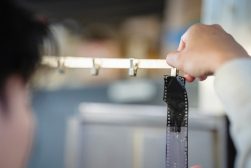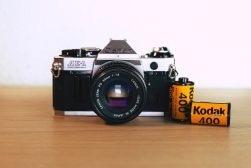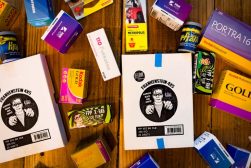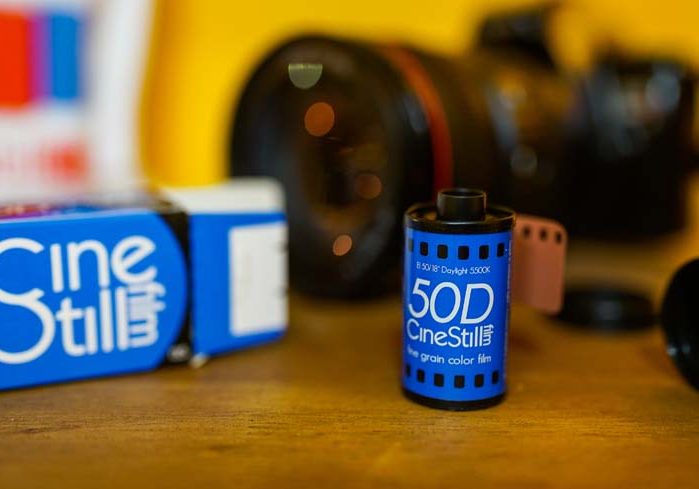
CineStill Film: Everything Your Need to Know in 2024
If you're looking to step foot in the exciting world of film photography, this ultimate guide to CineStill will show you how to get started.
Film Photography | Learn | By Ashley Darrow
Film photography is becoming an increasingly important part of my work behind the camera.
Film stocks like those available from CineStill are a good part of what keeps my love of 35 mm alive.
There are so many more brands of photographic film beyond just Kodak and Fuji.
One of the biggest names, and one of the most unique film stocks, is CineStill.
If you’ve been looking for something new in your analog photography or you’ve been wondering what the CineStill brand is all about, this is the guide for you.
What is CineStill?
In the world of analog photography, there has always been an overlap between motion picture and still photography.
CineStill is carrying this trend forward by designing motion picture-style film for the still photographer.
History of CineStill Film
CineStill as a company has only been around since 2012. However, in just over a decade they’ve managed to become one of the biggest names in photographic film.
CineStill got their start when the company founders wanted to find an easier way to shoot 35 mm motion picture film rather than dealing with the high cost and awkward process of working with uncut reels of movie film.
Over the years, CineStill has developed a range of films based on Kodak’s motion picture film.
If you really want to get to know any film photography brand, you need to take a look at the film stocks they have on offer.
Types of CineStill Film
As of this writing, there are five different kinds of CineStill film that are made in either 35 mm or 120 mm format.
Here’s a quick breakdown of each of these different types of film.
- 50Daylight—Commonly called “50D,” this is CineStill’s daylight-balanced film. I shoot this on bright, sunny days for rich color and great depth. 50D is available in 35mm and 120mm.
- 400Dynamic—400D is much more forgiving and can handle average daylight conditions with ease. You’ll notice a natural coloration that’s great for color portraits. 400D is available in 35mm and 120mm.
- 800Tungsten—800T was the first CineStill film stock. It’s designed for indoor shoots and can accommodate being pushed up to a whopping 3200! 800T is available in 35mm and 120mm.
- BWXX—”Double X” is CineStill’s black and white film stock. It has a vibe similar to the motion picture stock Eastman Double X which is still used for movies today. Double X is available in 35mm and 120mm.
- Redrum—Only available in 120, Redrum is a redscale film produced by winding 800T in reverse! Redrum has been out of stock for a while, but if this redscale film ever comes back—I’ll be first in line to shoot with it
CineStill film stocks are based on a few of Kodak’s motion picture stocks. In fact, CineStill film is manufactured by Kodak, but to the specifications designed by CineStill.
Why CineStill Film is Unique
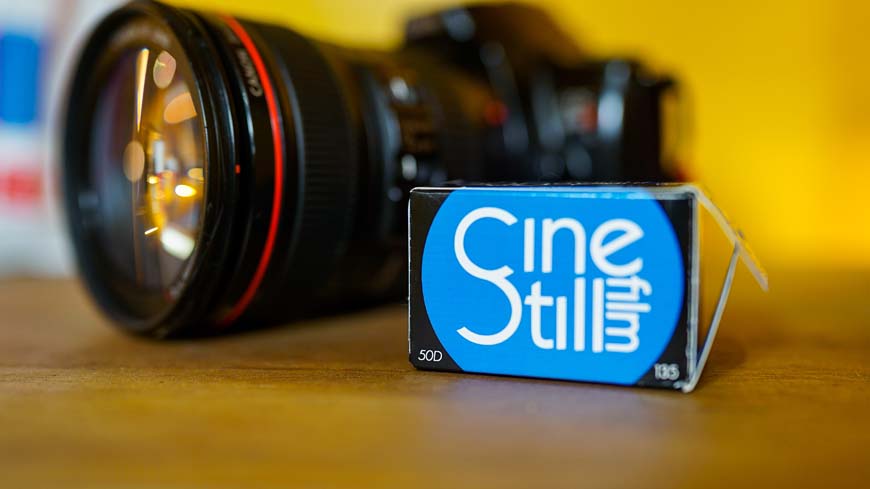
You can work around CineStill’s quirks pretty easily.
CineStill film is unique because it uses a design similar to motion picture film— but without the complicated developing process.
Motion film uses an anti-halation layer known as Remjet.
Remjet is a mixture of adhesive and carbon that is excellent at preventing light pipping in sensitive motion picture film, but it has a nasty habit of spoiling film-developing chemistry and even damaging film-developing machinery.
Before CineStill, anyone who wanted to experiment with still photography using motion picture film had to pay specialty labs to develop the film or remove Remjet at home—I’ve done that a few times and, trust me, it can be a hassle.
CineStill film allows you to enjoy the unique sensitivity of motion picture film stocks without the added complexity of developing cinematic film.
Essentially, the good people at CineStill have created a cinematic film stock designed expressly for still photographers.
Where to Buy CineStill Film
You have no shortage of options when it comes to shopping for CineStill film.
How Much Do You REALLY Know About Photography?! 🤔
Test your photography knowledge with this quick quiz!
See how much you really know about photography...

One of the best places to shop for CineStill film is on their own website.
However, here’s a thorough list of all the places where you can regularly find this film stock online.
- The Film Photography Project
- Walmart
- Amazon
- B&H
- Adorama
- Robert’s Camera
- Bellows Film Lab
CineStill film is incredibly popular. you’re going to find this brand all over the place at pretty much any photography shop that stocks film supplies.
My next piece of advice is going to come as no surprise, but you should check out your local photography stores.
They’re a great place to connect with other photographers and there’s a really good chance that they’re going to carry CineStill film.
You can also check CineStill’s website for an expansive list of CineStill film dealers all over the world.
Tips for Shooting with CineStill Film
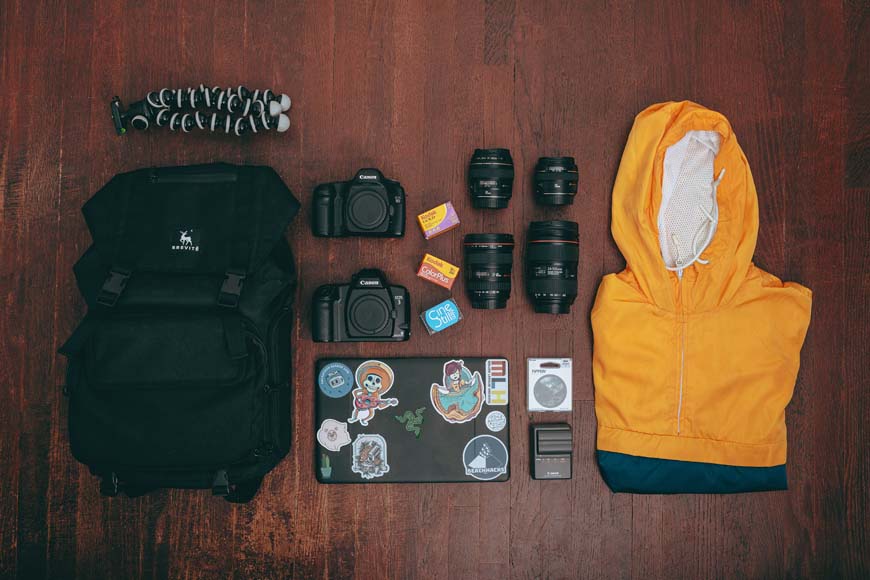
Image Credit: Jose Hernandez-Uribe
I’ve got a few tips for you if this is your first time shooting with CineStill film.
Some of these tips can also help if you’re completely new to film photography.
How to Expose CineStill Film
CineStill film is modeled after cinematic film which means that it is more sensitive to light than photographic film stocks.
Always expose your film to ensure that the peaks of your shadows are going to have some information to capture.
You can overexpose CineStill film pretty dramatically and still be able to recover your image in post-production.
CineStill film is great for shooting at night or in low light conditions thanks to its light-sensitive design.
Something that I always do when shooting with a new film stock is to shoot a test roll by shooting the same composition at different ISO values.
The first roll is a little like the first pancake, it’s there to calibrate the rest of the pancakes—or rolls of film.
This will give you a good sense of how a flexible film like CineStill is going to respond under your shooting conditions.
Know the Difference Between Daylight Balanced and Tungsten Balanced Film
CineStill film comes in either daylight-balanced or tungsten-balanced varieties.
Knowing the difference between these two categories of film is going to help you take better pictures.
Daylight-balanced film is meant to be shot outdoors and natural lighting while tungsten-balanced film is meant to be shot indoors under artificial lighting.
These two types of films are balanced to render natural colors under their respective types of lighting.
Using one of these film stocks under a different type of lighting can create some interesting color distortions.
Tungsten-balanced film tends to bias a little blue when shot under natural lighting, for example.
Understanding CineStill ISO—An Introduction to Film Speed
If you’re used to shooting with photographic film stocks like Kodak, one of the first things you’re going to notice is that CineStill doesn’t use the standard ISO system in the way you might expect.
CineStill film is rated with variable ISO. The CineStill 50D 35mm stock is rated at a base ISO of 50, but you have plenty of latitude from roughly ISO 12 to ISO 100 to shoot with.
CineStill film can also be pushed and pulled pretty extensively when developing.
This means that your effective ISO range is much higher than just what’s printed on the side of the box.
CineStill film is sensitive and able to be shot at in a wide range of lighting conditions.
Check each film stock for the right shooting conditions and approximate ISO range.
Common Problems with CineStill Film
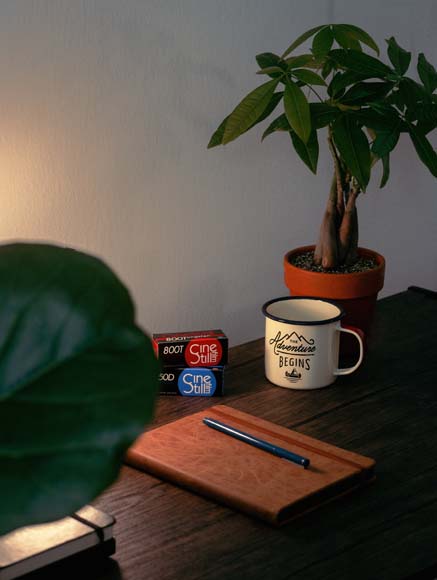
Image Credit: Jose Hernandez-Uribe
CineStill film is one of my favorites to shoot with, but that doesn’t mean there aren’t a few common problems that you should look out for.
Static Discharge Showing Up On Your Negatives
Did you know that static discharge can build up inside of your film camera and cause red or blue Marks to appear on your negatives?
The unique design of CineStill film means that it is more susceptible to static discharge than other brands of film like Kodak or Fuji.
In order to prevent static discharge from spoiling your negatives, we need to think about the physical conditions that are more likely to cause a static buildup.
Advancing your film too quickly, shooting in very cold environments, or shooting in very dry environments can all increase the chances of static buildup on your film.
I have yet to experience static buildup while shooting with CineStill—even when shooting in dry environments like the desert—but this is a known issue in the film photography community.
My advice is to go easy on your CineStill film.
As a side note, the effect of static on film can sometimes create compelling visuals. Half the fun of shooting analogue is working with the imperfections you’ll encounter along the way!
Light Leaks and Light Pipping
Light leaks are common throughout all of film photography, but CineStill film is a little more susceptible to this distortion than other film stocks.
CineStill film has great sensitivity and low light environments, but that does come with the risk of light pipping.
Light piping is caused when light travels through the acetate of the film itself causing streaks of light to appear throughout your images.
There are three things that you can do to avoid light pipping with CineStill film.
The first thing that you should do is to make sure that your camera’s light seals are in good shape. If you haven’t had your film camera serviced in a while, now’s a good time to take it to your local camera shop for a CLA.
You should also always load CineStill film and subdued light environments. Avoid loading a new roll of CineStill in direct sunlight.
The last thing that you can do is throw a little gaffer tape over the film check window on the back of your camera.
That’s a common source of light leaks that are easy to cover up with some tape.
Sensitivity to Environmental Conditions
CineStill film is based on the design and chemistry of movie film. This means that the film is much more sensitive to both light and color.
This also means that CineStill film has an increased sensitivity to environmental conditions.
Heat, cold, dryness, and moisture can all prematurely age your roles of CineStill film.
I recommend shooting CineStill film well before its expiration date—which is 2 years from manufacturing for all new roles of film.
You should also cold store your CineStill film. I keep all of my film stored in the fridge until it’s time for me to get out there and shoot.
How to Develop CineStill Film
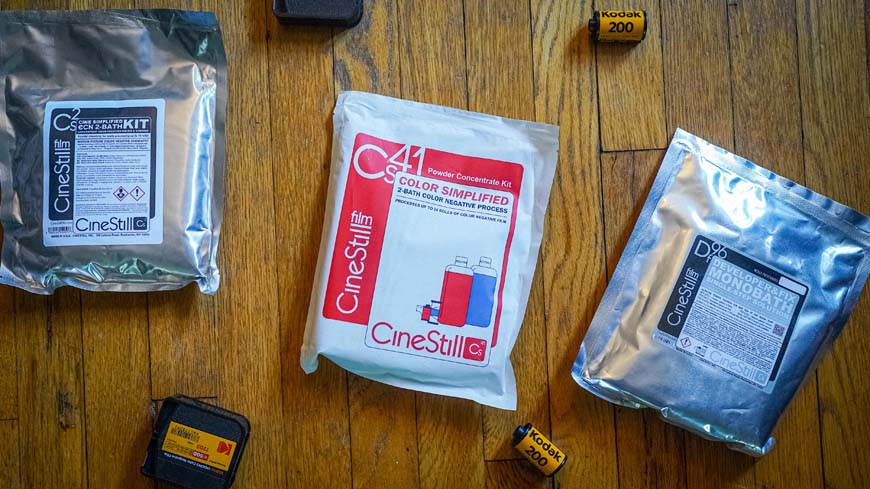
CineStill has developing chemistry mixes for BW, color, slide film, and motion picture film.
So, you shot your first roll of CineStill film and now you want to get it developed.
Can you have this film developed in any darkroom just like you would a normal roll of film?
Yes, you can develop CineStill just about anywhere. Here are the two main ways of developing CineStill film.
Develop At Home
My favorite way to develop CineStill film is to do it at home.
Here’s a quick list of your four major types of CineStill developing chemistry options.
- Df96—This is the monobath developer for black and white photographic film
- CS6—This developer works best on color slide film
- CS41—This is what you want to reach for if you’re developing color negative film
- Cn2—This is one of CineStill’s options for color movie film developing for film like Kodak Vision 3. It’s equivalent to ECN-2 processing
I’m going to be honest. I was really intimidated when I started developing my own film.
Getting the timings right, figuring out agitation techniques, mixing developing chemistry, it’s a lot to dive into. However, it’s been incredibly rewarding and now I’m confident I can develop just about anything I get my hands on.
Unless I’m mixing my own caffenol, I get my developing chemistry and supplies from CineStill.
CineStill offers the chemistry you need to develop slide film, color negative film, and black and white. This is also where I get the chemistry to develop Super 8 if you’re into shooting your own motion picture film.
CineStill also sells a few brands of film developing supplies from companies like Jobo and others. There are also basic kits that can get you started with developing film at home.
If you’re looking for a good place to start, I recommend their DF96 black and white monobath for a reliable way to start developing at home that’s not too involved.
Send to a Darkroom
If developing film at home doesn’t sound like your thing, I recommend just sending your film off to a darkroom.
CineStill film might be based on movie film, but it can be developed anywhere you usually send your film. You don’t have to worry about things like Remjet.
While we’re on the subject, let’s take a closer look at labs that take CineStill film.
Where to Develop CineStill Film
Knowing that darkrooms take CineStill film is great, but how about a list of the specific places that develop CineStill film?
As I just mentioned, nearly any darkroom can develop this film, but here are a few of my favorites as well as some used by photographers that I know and trust.
- The Darkroom
- CVS
- Walgreens
- Walmart
- Bellows Film Lab
- Local camera shops
I strongly recommend checking around for local camera shops as they can often give you better deals and you can work directly with the people who will be transforming your undeveloped shots into scannable and printable images.
Wrapping Up Your Guide to CineStill Film
I hope that this crash course on CineStill film has inspired you to get started with one of the most unique brands of photographic film out there.
If you’ve ever shot with CineStill film, I want to hear your stories down in the comments.
Also, let me know if you have any questions about film, CineStill, or anything related to the world of analog photography.

Check out these 8 essential tools to help you succeed as a professional photographer.
Includes limited-time discounts.





